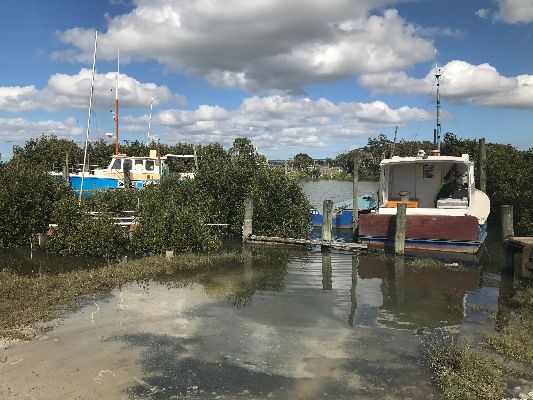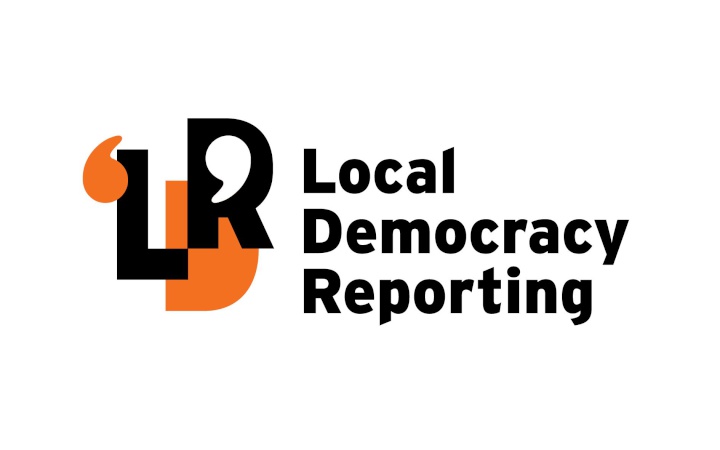More than 20 million trees and other natives will be planted around New Zealand’s biggest harbour in the groundbreaking $200 million dollar Kaipara Moana Remediation project.

Alan Wilcox, a senior
manager for the Kaipara Moana Remediation interim management
unit, said planting the trees was the foundation of a new
intergenerational approach.
First plantings are planned
this month. They will be the start of New Zealand’s
biggest harbour restoration programme — across 6000 square
kilometres of land with more than 8000km of
waterways.
Tame Te Rangi, chairman of the
governing body Kaipara Moana Remediation joint committee,
said it was positive to see the community working towards
improving the health of the harbour.
He said two
groups had already applied to be involved in harbour
improvement through riparian planting and other efforts —
the Wairua River group catchment group in Northland and the
Hoteo River catchment group in Auckland.
Te Rangi
said he was looking forward to all landowners in the
catchment — including farming and importantly, forestry
— working towards improving harbour health.
The initial
Kaipara riparian planting work will be boosted by millions
more native trees and plants in coming years on more than
800sq km of highly erodible land.
The Kaipara
Moana Remediation (KMR) project is New Zealand’s second
large-scale harbour catchment repair project — after
Raglan’s much smaller Whaingaroa Harbour Catchment Care
project, which has seen 2.1 million trees planted across 150
property owners’ land in the 450ha catchment from 1995.
Sediment in this harbour has fallen by 90 per cent and other
water quality indicators have also improved. Fish catch
rates research shows a shift from one fish caught every 18
hours to three fish every hour.
KMR aims to boost the
harbour’s health through slashing sediment running into
its waters, reducing nitrogen levels and boosting
swimability and shellfish health.
“Ninety-six
per cent of the west coast’s schnapper comes from breeding
grounds in the Kaipara,” Te Rangi said.
There
are about 1500 farms across the catchment — many of which
already have fenced-off waterways with riparian strip
planting.
Eco-sourced native trees and plants will
be produced over the next decade by nurseries in or close to
the catchment. These will be bought by landowners to plant
on riparian margins and in wetlands.
Remediation
aims to cut the approximately 700,000 tonnes of sediment
running into the harbour each year. This is seven times
higher than before human settlement, according to research
estimates.
Te Rangi said forestry companies,
particularly those currently harvesting, were also being
approached about sediment mitigation.
He said
waterways’ headwaters were important places to start the
improvement work.
Matauranga Māori and western science
are combining in the KMR project. Native plants will include
taonga species used for purposes such as medicine or
health.
The Government in October put $100m into
the KMR project and the local community expected to match
that.
“The programme is the first of its kind
[in New Zealand] — a long-term, catchment-wide remediation
initiative involving iwi, central and local government,
landowners and wider community working together to restore
the 602,000ha catchment,” David Parker, Minister for the
Environment, said at Waihāua Marae, Arapaoa about 60km
south of Dargaville at the formal signing of a memorandum of
understanding for the project. Minister of Conservation
Eugenie Sage was also at the formal signing.
There
are about 30 marae in the harbour catchment. They are
potentially contributing in various ways, starting with some
producing plants. Other work includes seed collecting and
putting together fencing gangs.
The KMR nursery
strategy’s first stage was formally adopted at the Kaipara
Moana Remediation joint committee April meeting held at
Ahikiwi Marae, north of Dargaville.
John Panoho, Ahikiwi
Marae chairman, said tangata whenua around his marae and
others were definitely looking to participate in the KMR
project, benefits including local employment to bring young
people home to their marae.
The next meeting will
be at Northland’s Oruawharo Marae near Topuni later this
month.
The KMR joint committee includes representatives
from Kaipara uri Ngāti Whātua, Te Uri o Hau, Te Roroa and
Ngā Maunga Whakahī o Kaipara, Northland Regional Council
(NRC) and Auckland Council.
Previous monthly
meetings have been held at Taita Marae at Mamaranui, north
of Dargaville, along with Auckland’s Haranui Marae near
Parakai and Puatahi Marae, north of
Helensville.
Plant production for this year’s
late-autumn planting season will be boosted at Te Uri o
Hau’s nursery at Te Arai, after the KMR joint committee
granted $600,000 at the Ahikiwi Marae towards this. It will
also be among mana whenua working with Māori
landowners.
The KMR project will see plants
produced across about 20 existing nurseries in and around
Kaipara Harbour’s catchment, with others showing
interest.
Kaipara Harbour is New Zealand’s biggest
enclosed estuarine harbour with the longest harbour
shoreline in the Southern Hemisphere.
Its 3200 kilometre
shoreline encloses a 6000 square kilometre-plus catchment
that runs more than 200 kilometres north to south, occupying
about 20 per cent of the length of the North
Island.
About two-thirds is in Northland, one-third in
the Auckland region. The catchment crosses five councils’
jurisdiction - Kaipara, Far North and Whangārei District
Councils along with NRC and Auckland Council – bringing
particular cross-organisational management challenges.
In
Northland, its northern edge runs from the middle of the
Russell State Forest’s second highest mountain Te Rangi
(not far from the top of Helena Bay hill) on the east coast,
westward to near Awarua (about 25 kilometres south of
Kaikohe) and then west towards the 770 metre Tutamoe - one
of the region’s tallest peaks.
At its south the
catchment’s southern-most point is in Auckland’s
Waitakere Ranges, only about 20 kilometres from the city’s
Sky Tower. It stretches westward from Waitakere almost to
Bethells Beach, not far south of Muriwai.
The
catchment’s takes up most of the coast-to-coast space
across Northland, to within about 15 kilometres of the east
coast and eight kilometres of the west coast. The situation
is similar at its southern boundary where it is about 20
kilometres from Waitematā Harbour in the east and southern
end of Muriwai in the west.
The major Kaipara Harbour
river systems are Kaihu, Mangakahia and Wairua which become
the Northern Wairoa and Hoteo and Kaipara in the south of
the catchment.
There are about 1500 property owners
across this land, many of whom are already part of catchment
care groups that have planted thousands of trees and erected
thousands of kilometres of riparian fencing. Large areas of
overseas-owned exotic forestry also feature around waterway
headwaters.
Native trees and plants will be grown from
locally eco-sourced plant material and used for riparian
plantings along the 8100 kilometres of waterways and
wetlands across 3,710 square kilometres of pastoral
land.



 Binoy Kampmark: Ironic Dependency - Russian Uranium And The US Energy Market
Binoy Kampmark: Ironic Dependency - Russian Uranium And The US Energy Market Binoy Kampmark: Arrest Warrants From The Hague - The ICC, Netanyahu And Gallant
Binoy Kampmark: Arrest Warrants From The Hague - The ICC, Netanyahu And Gallant Ian Powell: General Practice Visits, Emergency Department Presentations, And Social Determinants Of Health
Ian Powell: General Practice Visits, Emergency Department Presentations, And Social Determinants Of Health Gordon Campbell: On The Hikoi Aftermath
Gordon Campbell: On The Hikoi Aftermath Eugene Doyle: Has WWIII Started?
Eugene Doyle: Has WWIII Started? Binoy Kampmark: Fencing The Ocean - Australia’s Social Media Safety Bill
Binoy Kampmark: Fencing The Ocean - Australia’s Social Media Safety Bill